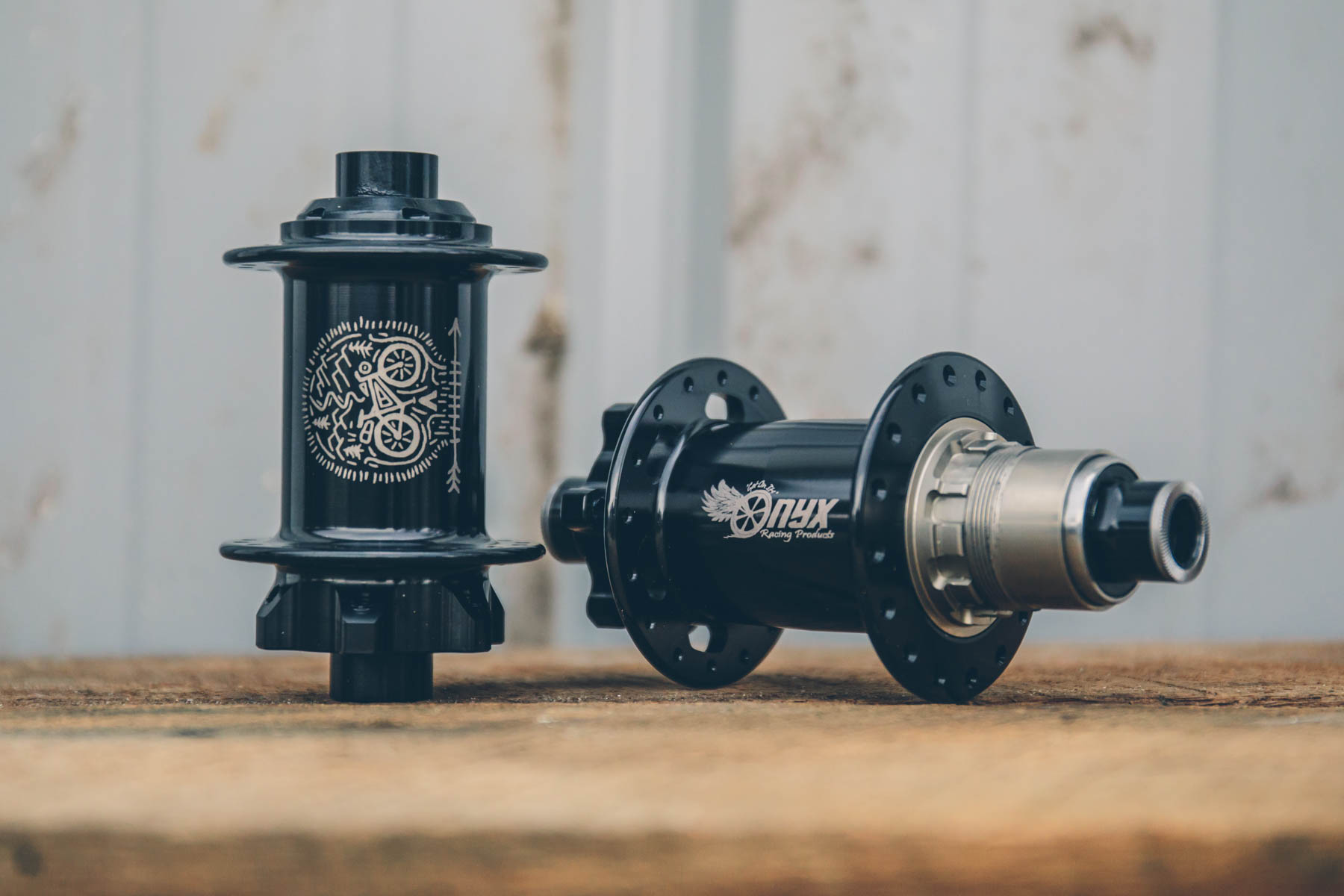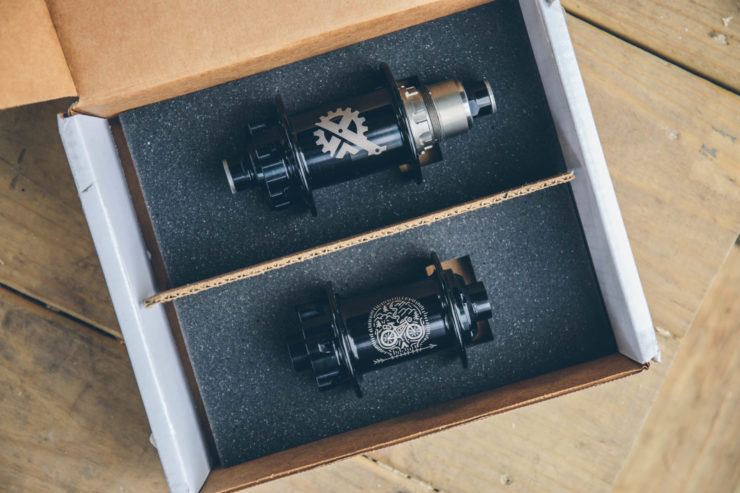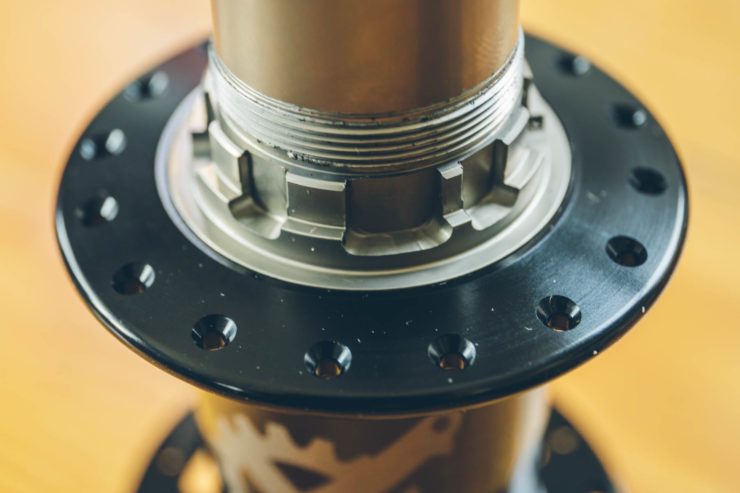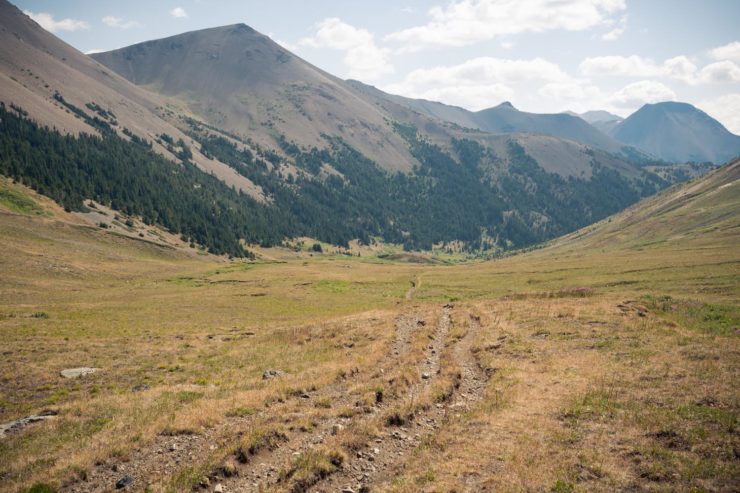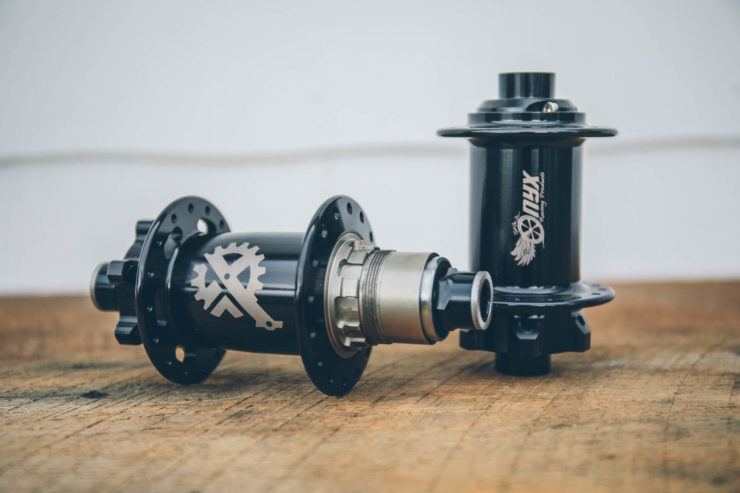Onyx Hubs Review: Long-term Trail Tested
Share This
In our long-term review of Onyx Hubs, Skyler illustrates a few key points to consider when looking at a rear hub for bikepacking and technical mountain biking. Plus, why Onyx’s silent, soft catch “instant engagement” has made him a life-long customer…
For me, the interest in high-engagement rear hubs all started with a few too many pedal strikes. There’s no doubt in my mind that the trend toward longer, lower and slacker bike geometry has made mountain bikes more capable and fun, but the main penalty for these new-school, lower bottom bracket heights is increased pedal to rock action. It’s a major annoyance that is especially relatable to the bikepacking world. After all, it’s pretty easy to avoid pedal striking on an unloaded bike, on maintained mountain bike trails. Take a loaded rig onto backcountry trails that were likely blazed on foot or horseback, however, and pedal striking can, in my experience, become a major hindrance to forward progress.
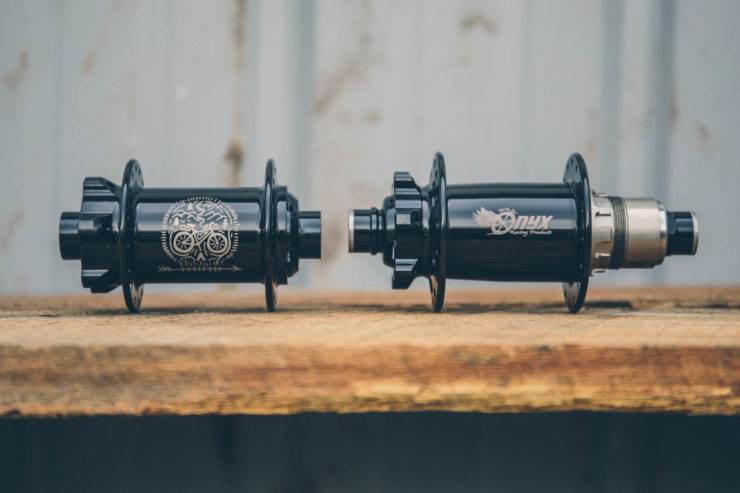
Of course, bottom bracket height is not the only factor that affects pedal striking. Crank length, pedal thickness and shape, and one’s ability to time pedaling through pedal-biting obstacles all have an impact on one’s ability to pedal through chunder. And that latter point – the ability to time pedaling and ratchet through techy bits of trail – is massively influenced by hub engagement.
Onyx hubs’ claim to fame is really in their freehub engagement. It’s instant. Or, it’s imperceptibly close to instant – more on that later.
How Freehubs Work
Probably 99.99% of bicycle freehubs depend on some sort of pawl-ratchet system. if you don’t already know, here’s a video of how that works.
On pawl-based hubs, the number of teeth on the driver determines how quickly the hub will engage when you start pedaling forward. Bike hubs will use at least two pawls – usually three or more – because hubs are small and pedaling torque at the hub is pretty darned high. To have quicker hub engagement in a pawl hub, you need more teeth on the driver, or pawls working out of sync with each other. The quicker the engagement of a pawl freehub, the tinier the driver teeth and pawls get, and these hub pieces get much harder to machine, requiring extremely tight tolerances. The end result is that there’s somewhat of a limit on how precise a pawl-based hub can be made, with them commonly offered with 6-10° engagement and premium choices down to about 3°.
Onyx hubs don’t use pawls or toothed ratchets of any form. For the job of freewheeling they depend on a sprag clutch. Here’s a 1980s animation of how it works:
In short, a row of camming element run between two smooth steel races. They slide freely in one direction and cam in the other, wedging in between the two races with such force that the races cannot move relative to each other. As soon as you start pedaling forward, the sprags engage, no matter their position on the races, which effectively offers an infinite number of engagement points. The downside to a sprag clutch is that the inner and outer steel races need to be very strong, and therefore Onyx rear hubs are about 100-200g heavier than non-sprag competitors.

It should follow that Onyx’s rear hub engagement is instant, but there is a tiny, barely noticeable amount of rotation required to load the sprags in the clutch. It is probably less than one degree of rotation before the sprags are fully loaded, but because of the nature of camming devices, the “catch” of the freehub feels soft, as the sprags are gradually loaded. There’s no hard on/off stop that one feels when a pawl freehub engages, and I find the soft, near-instant feeling when I begin to pedal extremely pleasant. It makes my bike feel solid in a way I hadn’t appreciated before using Onyx hubs.
The other noticeable difference between a pawl-based freehub and Onyx’s sprag clutch is that the audible clicks or buzz of spring-loaded pawls running over the indexed driver ring is replaced by, well, nothing. The sprags are totally drag-free and silent while freewheeling forward. Many people claim to enjoy loud hubs, but having spent time absent this noise, the silence is a joy – especially while bikepacking, I am left to hear the sound of the wind, creeks, birds and the satisfying scrunch or rip of tires on dirt.

Far and away, the biggest benefit of Onyx’s hubs, still comes down to the freehub engagement. In the South Chilcotins, where the trails, until recently, only saw foot and hoof, the climbs are notoriously frustrating. These raw trails are narrow, janky, and just a bit steeper than one can comfortably pedal up on a loaded bike. From the seat of a bicycle, the trailbed is often obscured by fireweed or less compliant shrubbery. So, one usually can expect to be constantly on and off the bike on climbs, pedaling flat out until a pedal strike or a slipping rear tire on a too-narrow trail forces you to put a foot down. Though there are many factors at play, I have never pedaled up so many climbs on those rough, backcountry trails as on this year’s trip with Onyx hubs. I will credit at least some of that improved pedaling to the ease with which one can ratchet the pedals through technical bits of trail and time one’s pedaling with an instant-engagement freehub.
Now, so far I haven’t uttered a peep about the front hub. In many ways, a front hub is a front hub is a front hub. These days, they’re almost all just a pair of cartridge bearing pressed into an aluminum hub shell. (Shimano makes the only half-decent option that still use cup and cone bearings, but that’s not so different anyway.) But, Onyx strives for something more in their front hubs too.
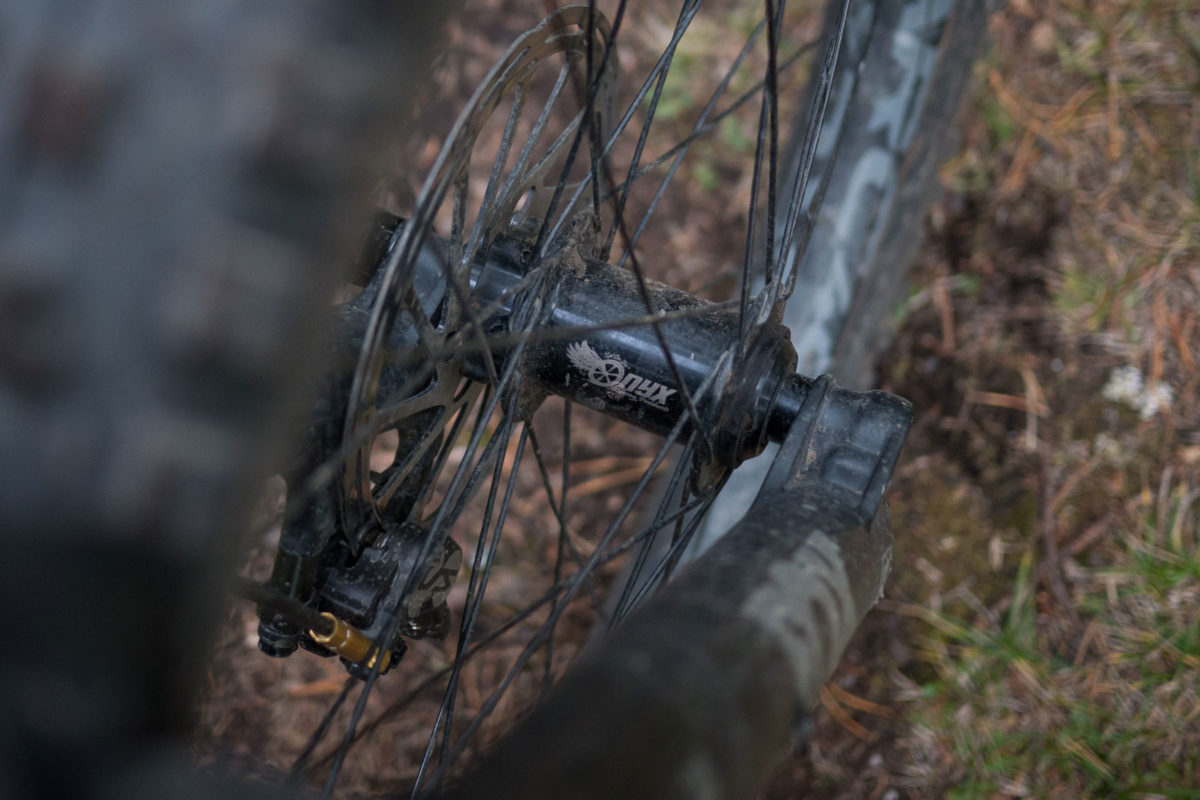
To start, Onyx hubs use hybrid ceramic bearings throughout. Most cartridge bearing are steel. Then there are pricier hybrid ceramic and full ceramic alternatives. Steel is easy to understand – the ball bearing and the races those ball run on are, you guessed it, steel. Full ceramic bearings use ceramic ball bearings running on ceramic races. The case for ceramic is that the material is much harder than steel, and they can be made rounder than steel bearings, and they therefore have lower rolling resistance. A common misconception is that they also last longer – but this is not necessarily the case. Hybrid ceramic bearings feature ceramic ball bearing running on a steel race. They’re cheaper than full-ceramic bearings, but since the load is more concentrated on the ball bearings than on the race, they reap most of the lower rolling resistance of full-ceramic bearings.
The problem with hybrid ceramic bearings is that the durability of a bearing is determined by its weakest link – now you’ve got really, really hard pottery balls running on a much softer race, which can tear apart the race quicker than if everything was made of softer steel. And, those really hard balls have a lower tolerance for imperfection. Given that every bearing I’ve ever destroyed (and there has been quite a lot of ’em) has been murdered by contamination, not strictly by accumulated miles, I generally advocate for nothing but well-sealed steel bearings on a bikepacking bike. Leave the ceramic bearings to race-day road bikes that might never see rain, and will certainly never see river crossings or deep mud.
All that said, on a fantasy planet where bearings could be perfectly sealed against contamination without introducing a huge amount of friction, ceramic bearings roll quicker and might even last longer. Thanks to Onyx’s exquisitely tight machining tolerances, they do well in this regard. There is no rubber seal beyond the double lip seals along the inner race of the Enduro Hybrid Ceramic bearings that Onyx employs, but the thread-on outer bearing cover is machined to an extremely close fit with the hub shell, leaving only a tiny space for water entry. Contaminants would then have to travel from the outer race of the bearing to the end of the seal on the inner race to penetrate into the inner workings of the bearing.
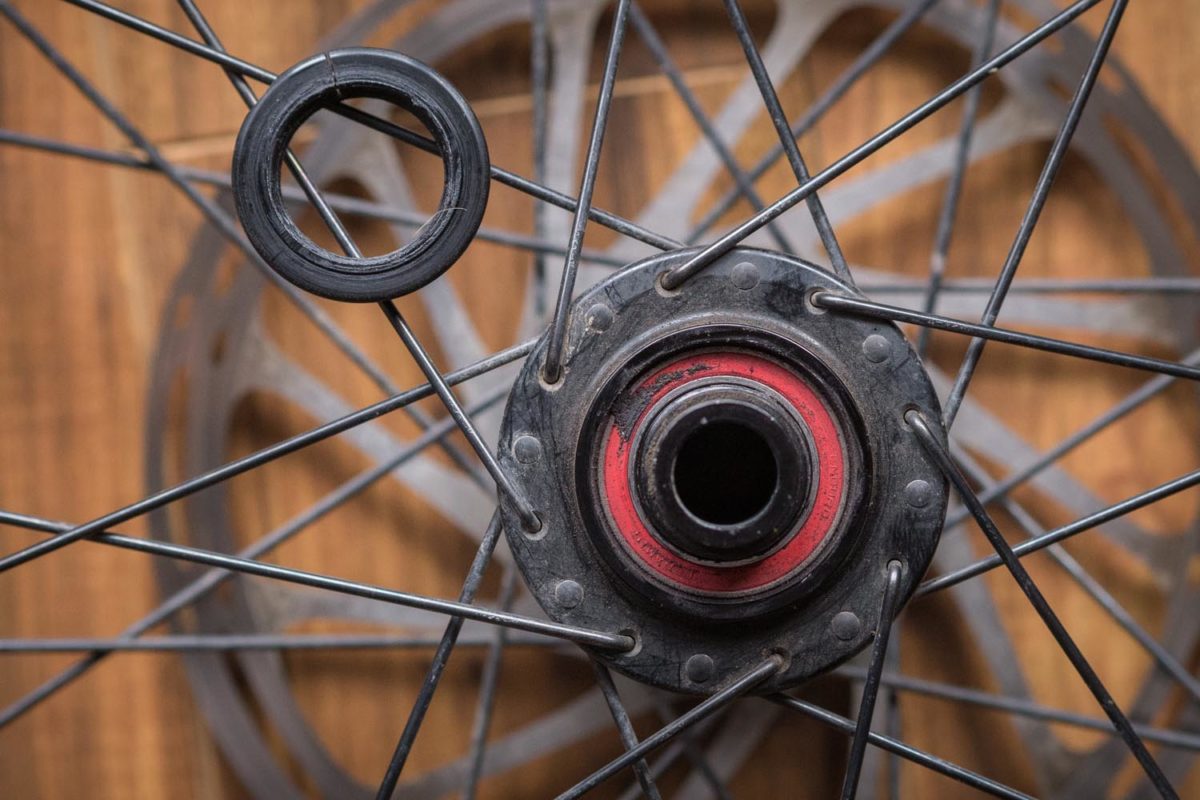
After 8 months of riding in all conditions (including plenty of muddy wetness this spring, and a lot of dust this summer), the bearings on the front hub sound a bit drier than when they were new, but still spin smoothly. Pulling the covers off, I found a tiny bit of gunk built up on an otherwise clean-looking bearing, which is better than I can say for other bearings on my bike.
It’s no surprise that Onyx Racing Products gears their products toward racing. I appreciate the low-resistance ceramic hybrid bearings and non-contact seals, but when these bearings wear out (and they will, and that’s normal and OK) I’ll replace them with high quality steel bearings. For bikepacking, I’m generally willing to give up a bit of performance for longevity. Onyx hubs are designed to be easily serviced and adjusted by a savvy mechanic – though bearings will wear, the hubs themselves are clearly built to be passed from bike, to bike, to bike for decades. Furthermore, thanks to Onyx’s domestic (Minneapolis) machining, you can expect to easily source replacement pieces for as long as Onyx exists – whether needing a new axle or a different freehub body.
Onyx Hubs are available in 14 powder-coat colors and 9 anodized colors in a multitude of sizes and configurations. Each hub is constructed with titanium bolts and has a 5-year limited warranty. Onyx Racing Products sent this pair of hubs for review, hence the custom laser etching… However, laser etching is a free service they offer for any hub set. There are a few restrictions (multi color images, copyrighted images, etc). But, apparently, if you want our skull logo on a hub, that is an option.
Pros
- Instant engagement freehub extends technical riding ability
- Sprag clutch offers completely silent coasting
- Adjustable bearing pre-load for maximum bearing life and performance
- Available in every conceivable hub width, axle diameter, cassette interface, rotor mount, color-combo, etc.
- Made in USA, spare parts easily available direct.
Cons
- Pricey
- Heavy
- Ceramic hybrid bearings with non-contact seals offer lower rolling resistance at the cost of shorter bearing life.
- Tested: 32 hole, 6-bolt BOOST, Front 15x110m, Rear 12x148mm XD
- Weight: Front 225g, Rear 475g with steel XD driver
- Price: Front $192, Rear $445
- Finish (as tested): Anodized Black with custom laser etched logos
- Place of Manufacture: Minneapolis, USA
- Contact: Link
Wrap Up
Onyx hubs are very expensive. A set of Onyx hubs costs in the neighbourhood of a decent suspension fork, or a mass-produced steel frame. But, hubs – especially rear hubs – are one of the most important components on a bicycle, and also one of the most commonly under-specced and overlooked components on complete bikes. Freehub failures are trip-ending, pushing the bike sort of failures, and occur with surprising regularity on so called ‘mid-range’ hubs. Not only should it be nearly impossible for Onyx’s sprag-clutch freehub to fail, but the instant engagement offers a very noticeable performance-boost on technical trails.
I’d have as hard a time as anyone paying $192 for a front hub, so as much as I love the beautiful machining and servicability of Onyx’s front hub, I’ll probably seek a more affordable option on my next wheel build. But, I’m not sure I can live with any other rear hub. This is perhaps the greatest danger of Onyx hubs: once you’ve experienced their soft catch and instant engagement, other bikes start to feel like garbage. Now that I’m used to a totally silent freehub, the buzz of pawl-based freehubs is a major annoyance, drowning out all the sounds of the forest and the satisfying scrunch of tires on dirt. Onyx has made a life-long customer out of me. I’ll accept this fate because their hubs are built to last a lifetime.
Please keep the conversation civil, constructive, and inclusive, or your comment will be removed.






